Like the seed, so is the harvest: we will show you how you can use your favorite plants to obtain seeds for the coming year.
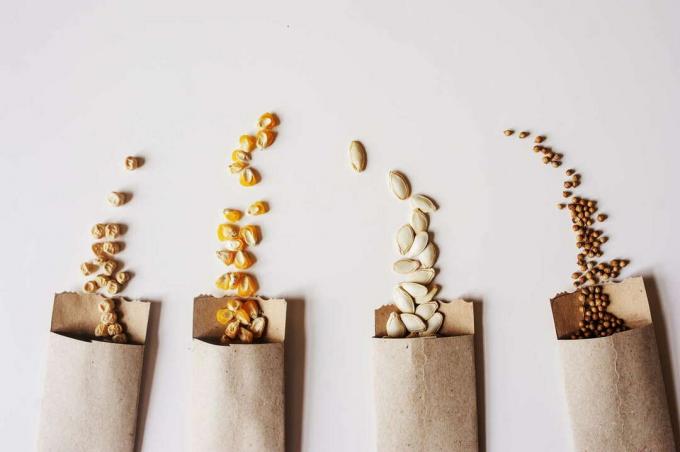
If you want to harvest, you have to sow first – but do you really have to buy new seed every spring? No, you can also get seeds in your own garden and it's really easy. We will show you how you can remove seeds from a wide variety of vegetables and flowers and store them for years to come.
contents
- Obtaining seeds: Which plants are suitable for obtaining seeds?
-
Harvesting seeds: step-by-step instructions
-
Harvest your own vegetable seeds
- fruit vegetables
- Root, leafy and bulbous vegetables
- Seed Vegetables: The legumes
- Harvest Flower Seeds
-
Harvest your own vegetable seeds
- Dry harvested seeds
- Store seeds properly
Obtaining seeds: Which plants are suitable for obtaining seeds?
Seeds can only be obtained from vegetables, summer flowers, and also perennials that produce flowers capable of pollination. These flowers, in turn, need to be pollinated, so the presence of insect pollinators is often a requirement. Double or sterile flowers and flowers of exotic plants are not pollinated in the first place and therefore do not produce seeds. All plants that were harvested before they flowered - such as lettuce or cabbage - also cannot form seeds. If you still want to get seeds from these plants, you don't harvest individual plants, but wait for them to flower and seed.
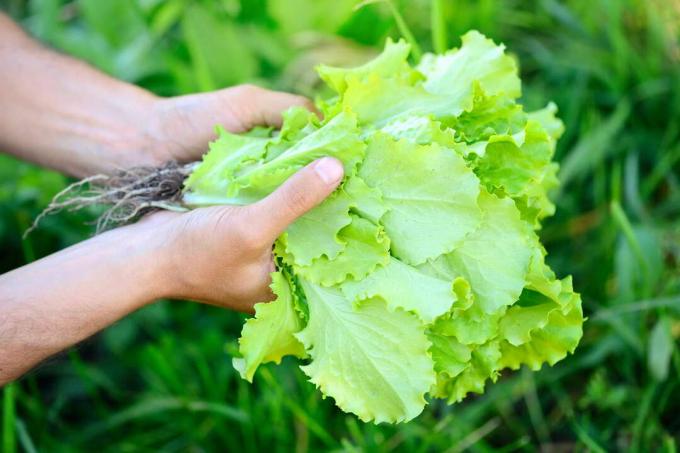
There is also the special case of hybrid seed: hybrid varieties often form seeds, but they do are not seedfast, so that the resulting offspring differ greatly from their mother plants be able.
Tip: Hybrid varieties are given the suffix "F1" on the seed packet. Offspring of hybrid plants are not uniform, only half of them have the same genetics as the mother plant. The other half can have very different properties.
Harvesting seeds: step-by-step instructions
The principle of harvesting seeds is very similar for all plants. So you should first find healthy, vigorous plants and only collect seeds from these. Sickly plants should not be harvested: on the one hand, the seed quality is often significantly poorer and, on the other hand, some diseases are also transmitted via seeds. If you sow them, the little plants can quickly become ill and die. Once you have selected the ideal plants, they should be well cared for and supplied with nutrients, because flowering and seed formation cost the plant a lot of energy. The use of a high-quality organic fertilizer is an important care measure. You can find out everything about it in our special article Vegetable fertilizer, its properties and benefits.
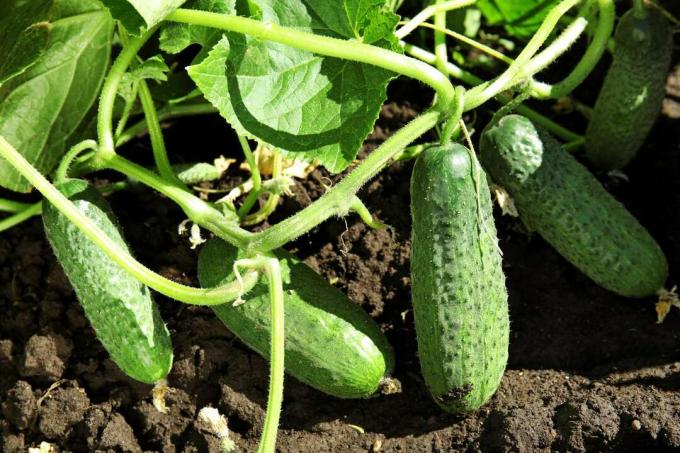
In order for the seeds to develop fully, you should definitely wait until the fruit is ripe or the seeds have turned brown and dried out. Now you can remove the seeds, clean them and remove any pulp. Check that the seeds are really clean: any dirt can later lead to the seeds starting to mold or diseases being passed on to the new generation.
Get seeds from your own garden: instructions
- Fertilize and care for plants well.
- Wait for flowering and seed formation.
- Allow fruit or seeds to fully mature and only collect from strong, healthy plants.
- Separate seeds cleanly from pulp and other impurities.
- Dry seeds, bottle and label.
- Store in a cool, dry place, sow again within the lifespan of the seeds.
Harvest your own vegetable seeds
Depending on the plant species, vegetable seeds form in fruits, pods, pods or freely on the inflorescence. The extraction of seeds is accordingly different. We go into the individual types of vegetables and explain how you can get seeds from them yourself.
tip: If you are not sure which group you find your vegetable in, take a look at our article Classification into the different types of vegetables past.
fruit vegetables
These include the plant families of the nightshade family (Solanaceae) and the pumpkin family (Cucurbitaceae), in which the fruits are consumed.
In the nightshade family we find the tomato as a representative (Solanum lycopersicum), Paprika (Capsicum annum), physalis (Physalis peruviana) and aubergines (Solanum melongena). They are largely self-pollinating, making the strain easy to maintain. In order to support self-pollination, it is worth shaking the open flowers of the Solanaceae in the morning to distribute its own pollen on the stigma. From August the fruits of this vegetable family ripen and can be harvested. For seed production, harvest soft, ripe mid-season fruits. The seed quality is best for the fruits that are neither the first nor the last to ripen.
Because of their gelatinous covering, tomato seeds are soaked in water for two to three days and rinsed daily until the seeds are freed. This is followed by drying on paper. Pepper, physalis and aubergine seeds can be brushed directly onto a paper towel and dried in this way.
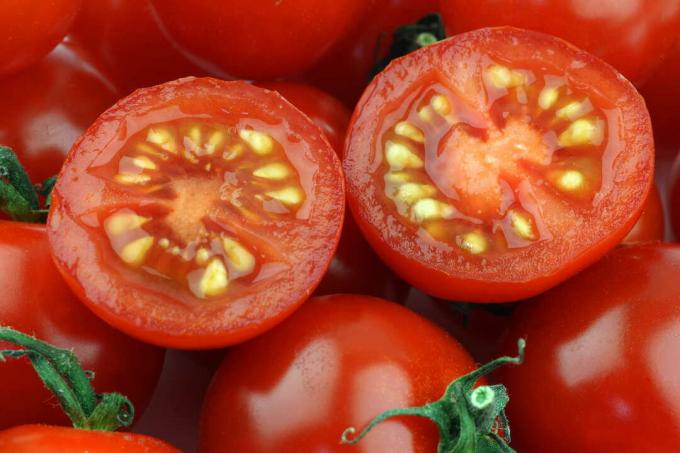
tip: A detailed guide to the topic "Get tomato seeds“ can be found in our special article.
If pumpkin (Cucurbita sp.), zucchini (Cucurbita pepo subsp. pepo convar. giromontiina), melon (Cucumis melo) or cucumber (Cucumissativus), the seeds of the pumpkin family are always surrounded by a tasty fruit. The seeds can be obtained along with the ripe fruit. However, Cucurbitaceae are strict cross-pollinators. They form single male and female flowers, which are often visited by bumblebees and bees. Unfortunately, the eager insects do not distinguish between the species they pollinate. This is how hybrids of pumpkin and zucchini quickly develop in the next generation when plants are close to each other.
Attention: Even worse, crossbreeding in the next generation can lead to the synthesis of bitter substances, the so-called cucurbitacins, which can cause cramps and worse if consumed in excess. Anyone who uses seeds of cucumbers, pumpkins, melons and zucchinis that they have collected themselves should use the resulting seeds It is therefore essential to pay attention to fruits if they have a very bitter taste - and if in doubt, prefer them dispose.
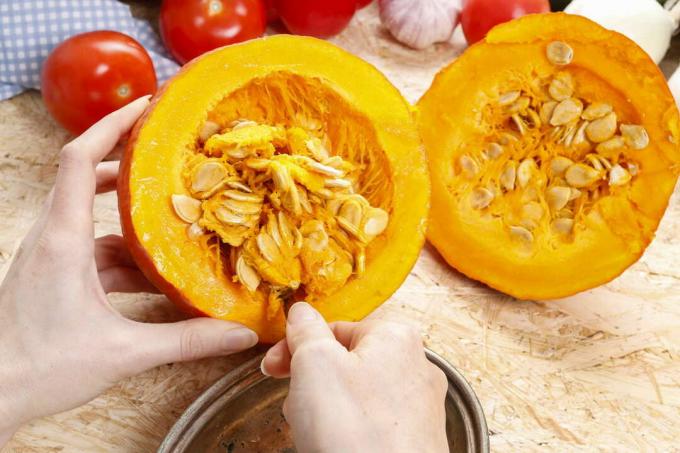
For squash, the timing for seed collection is simply harvest time in the fall, but for courgettes and cucumbers, it takes a little longer than usual: Both fruits are often harvested before they are fully ripe, as they then taste better, are still tender and have hardly any seeds contain. Leave the fruit on the plant longer than usual, well into the fall. It is best to leave fruit hanging at the end of the season for seed production, otherwise the plants will produce significantly less fruit overall. To obtain cucumber, zucchini or squash seeds, cut open the fruit, scoop out the seeds with a spoon and rinse vigorously with water. Once all the pulp has come off, place the seeds on paper towels to dry. After a few days, the seeds obtained can be bottled and stored. Seeds of tomatoes and peppers can germinate for five to ten years, those of pumpkins, zucchini and co. for about four to five years.
Root, leafy and bulbous vegetables
These include the families of the bulbous plants (Amaryllidaceae), the umbelliferous plants (Apiaceae), daisy plants (Asteraceae), and cruciferous plants or cabbage plants (Brassicaceae). All of these plant families are cross-pollinated and capable of interbreeding with other varieties of their kind.
The bulbous plants, such as onion (Allium cepa) and leek (Allium porrum), usually do not flower until the second year. So if you want to get seeds, they should not be harvested. In the summer of the second year, several long, leafless flower stalks with globular, white-green flower heads form. After pollination by insects, black, wrinkled seeds develop, which quickly fall out when ripe. Therefore, harvest the entire bud when the bracts around the seeds become dry and allow them to post-dry at room temperature for about ten days. Onion seeds are only germinable for about a year.
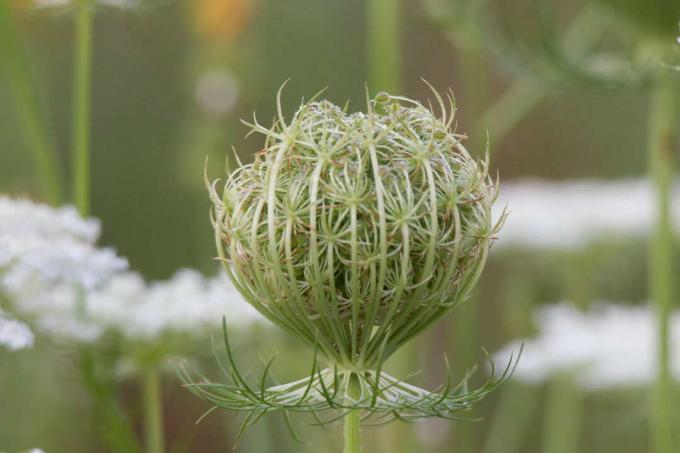
Root and tuber vegetables from the umbelliferae family, such as carrot (Daucus carota), parsnip (Pastinaca sativa), fennel (Foeniculum vulgare) and celery (Apium graveolens) usually flower in the second year, carrots sometimes even in the first year. In the spring of the second year, elongated, umbel-shaped inflorescences form, which bloom inconspicuously greenish or white. Insects like to pollinate the flowers, and seeds quickly form and ripen in the fall. The sickle-shaped to rounded seeds fall down quickly when it is dry, so the umbels are cut as a whole in the early morning hours and dried indoors. Seeds of carrots, parsnips, etc. are germinable for about two years.
The widespread daisy family, which includes black salsify (Scorzonera hispanica) and chicory (Cichorium intybus), but also the salad (Lactuca sativa) belonged, bloom partly in the first, partly in the second year. They, too, are cross-pollinators that can interbreed between different varieties within the species if the varieties are about 3 km apart. In October, the pollinated flowers mature into achenes, which, like the black salsify, have a kind of parachute, the pappus, for wind dispersal. Here the seeds should be harvested as soon as the white pappus unfold, which occurs between September and October. These seeds are also dried indoors at room temperature for one to two weeks. Incidentally, when preparing the seeds, the pappus are removed, which makes it easier to sow next year. The daisy family germinates reliably for about four years.

The popular cabbages, which include arugula (Eruca sativa), but also leafy charcoal such as palm kale (Brassica oleracea var. palmifolia) belong, usually bloom in the second year. Some species such as radishes (Raphanus sativus) sometimes bloom in the first year. For the kitchen, they are all harvested and consumed in the first year. These cultures must therefore be left for another year and may not be harvested. Bright yellow, cross-shaped flowers form here during the flowering period, which offer nectar to insects and are therefore popular with visitors. However, this also means that all of the plant families mentioned are cross-pollinated with their representatives and the varieties are often subject to changes due to genetic material from the same species that is foreign to the variety. Cabbage plants form elongated pods with round, black seeds inside. From mid-September, the seeds can be cut off and dried indoors. To do this, remove the seeds from the pods and let them air dry. Cabbage plants germinate reliably up to four years after harvest.
Seed Vegetables: The legumes
These include legumes from the legume family (Fabaceae), as well as a wide variety of maize varieties (Zea mays), which belong to the sweet grasses (Poaceae).
Who among the papilionaceous plants like lentil (Lens culinaris), snow pea (Pisum sativum) or bean (Phaseolus vulgaris) If you want to win seeds yourself, it won't be difficult. These vegetable plants flower and bear fruit in the same year of sowing. Legumes are self-pollinators, so each variety can always be safely preserved in the next generation without crossbreeding. After flowering from May to August, small green pods quickly form, which quickly become larger, fibrous and finally brown and dry. Leave the pods on the plant until they turn brown, dry up, and start to rustle. The seeds inside become hard as they mature towards late summer to late fall. At best, wait until the end of the season to do this, otherwise the bean or pea plants will produce less yield for the kitchen. The dry pods are removed from the now dead plants and dried a little in the house. In winter you can get the now dry seeds out of the pods, bottle them and store them. Peas, beans and co. are viable for about two to four years.
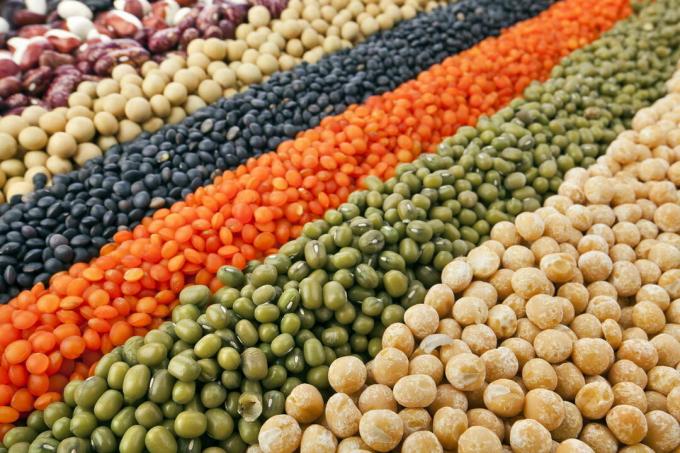
Fertilization, harvesting and drying are somewhat different for sweet grass maize. Here the male flower forms on the top of the corn plant and the female flower on the future cob, which is pollinated by the wind. However, this also means that a nearby corn field or corn plants of other varieties can easily cross and thus change the sown variety with its genetic makeup. If you want to preserve your own variety, you put a bag over it just before the female flower and protects it from foreign pollen. This can be recognized by the light green stylus threads that protrude from the cob bracts. If the plume, i.e. the male flower at the top of the shoot tip, starts dusting, collect the pollen for example on a paper by shaking and then transfers it to the female pen threads.
Put the bag back on and wait for the bulb to form underneath. In October, the two to six cobs per plant mature while the corn plant itself dies. If the cob bracts have also dried up, the whole cob can be harvested and dried indoors. After one to two weeks at room temperature, the seeds can be rubbed off the spindle and stored in a cool, dry place. Corn seeds are viable for about four years.
Harvest Flower Seeds
Sterile and filled flowers, such as double-flowered hollyhocks, do not form seeds, they cannot be used for seed production. Otherwise, the seeds of many flowers and perennials mature in autumn and can be harvested. In many plants, the flower seeds are in small heads, for example in the daisy family such as marigold (Calendula officinalis) or sunflower (Helianthus annuus). Obtaining flower seeds is quite simple, the whole seed head, whether spherical or elongated like lavender (Lavandula angustifolia), cut off and dried in the house. The seeds easily detach from the seed heads when they are completely dry. Remove any remaining plant parts and store the seeds in labeled bags or jars. Most flower seeds are viable for about two to five years.
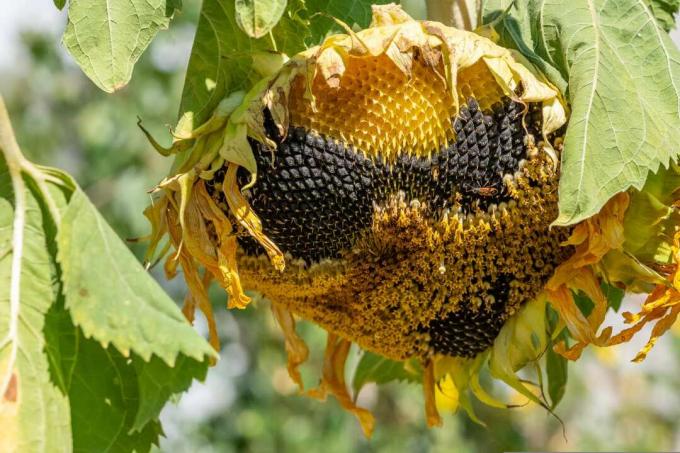
tip: Seeds of hardy perennials often need a cold stimulus or other treatment to germinate, which leads to the breaking of dormancy. This so-called "stratification" can be carried out individually on the different seeds - this is something for real experts. Easier, but with a lower success rate due to hungry pests, is to harvest the seeds and sow them directly outside. Normally, this gives the seed just the right stimulus to encourage it to germinate. It is not unusual for germination to take place next spring.
Dry harvested seeds
Seeds should be dried well before storage. This is done in a warm, dry place indoors, as it is often too damp and cool outside by the time the seeds are harvested in the fall. Flower seeds are dried as a whole seed head, from which they can be easily detached later. Seeds of fruiting vegetables should be free of pulp residue, while pods and pods can be dried whole. At room temperature, seeds take about a week to become dry enough for storage. Moist or immature seeds take longer to dry, otherwise mold can quickly form when the seeds are stored.
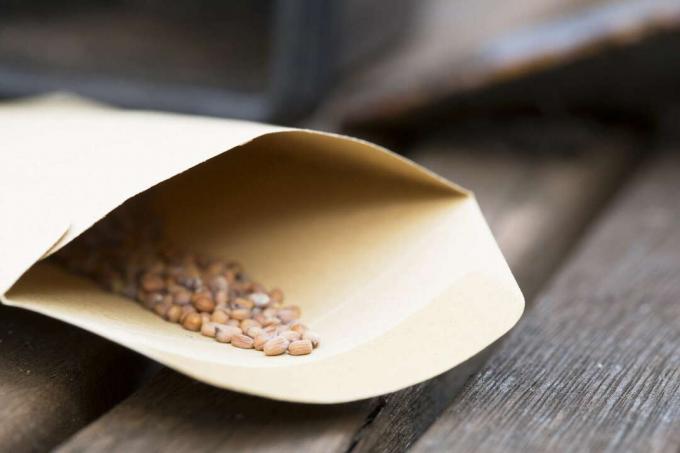
Store seeds properly
Dry seeds are best kept in a dry, dark and cool place. A paper envelope or a closed glass jar is best for this. With the latter, however, the seeds must be really dry, as residual moisture quickly leads to mold growth. Sealed in airtight containers, seeds keep best in the basement and remain viable for a long time. Too much heat, on the other hand, significantly reduces the germination capacity and lifespan of the seeds. Depending on the species, seeds remain viable for 1 to 10 years and should be back in the garden within their lifespan.
The popular seed bombs can be formed particularly well with flower seeds. In our article we clarify the origin of the trend and give instructions for it Making seed bombs with simple ingredients.



